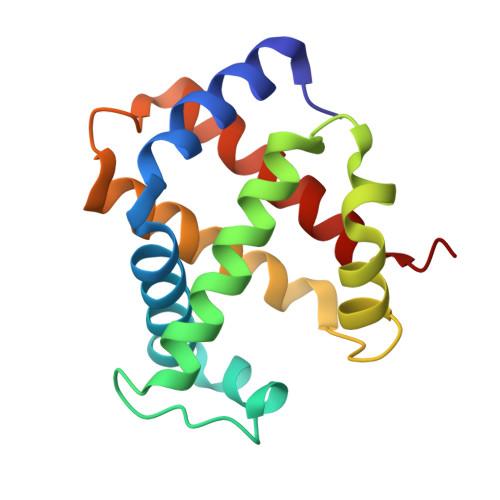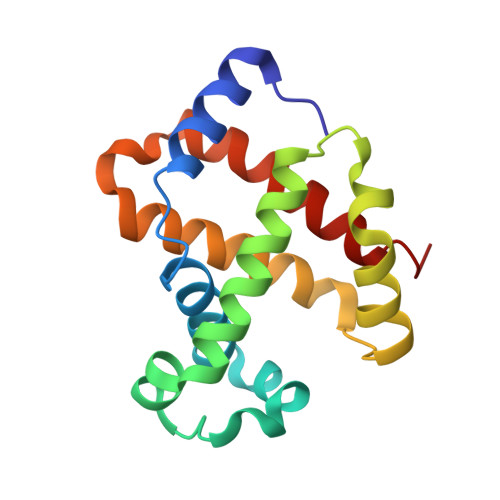Exploration of Structure-Activity Relationship of Aromatic Aldehydes Bearing Pyridinylmethoxy-Methyl Esters as Novel Antisickling Agents.
Pagare, P.P., Ghatge, M.S., Chen, Q., Musayev, F.N., Venitz, J., Abdulmalik, O., Zhang, Y., Safo, M.K.(2020) J Med Chem 63: 14724-14739
- PubMed: 33205981
- DOI: https://doi.org/10.1021/acs.jmedchem.0c01287
- Primary Citation of Related Structures:
6XDT, 6XE7 - PubMed Abstract:
Aromatic aldehydes elicit their antisickling effects primarily by increasing the affinity of hemoglobin (Hb) for oxygen (O 2 ). However, challenges related to weak potency and poor pharmacokinetic properties have hampered their development to treat sickle cell disease (SCD). Herein, we report our efforts to enhance the pharmacological profile of our previously reported compounds. These compounds showed enhanced effects on Hb modification, Hb-O 2 affinity, and sickling inhibition, with sustained pharmacological effects in vitro . Importantly, some compounds exhibited unusually high antisickling activity despite moderate effects on the Hb-O 2 affinity, which we attribute to an O 2 -independent antisickling activity, in addition to the O 2 -dependent activity. Structural studies are consistent with our hypothesis, which revealed the compounds interacting strongly with the polymer-stabilizing αF-helix could potentially weaken the polymer. In vivo studies with wild-type mice demonstrated significant pharmacologic effects. Our structure-based efforts have identified promising leads to be developed as novel therapeutic agents for SCD.
- Department of Medicinal Chemistry, Virginia Commonwealth University, Richmond, Virginia 23298, United States.
Organizational Affiliation:




















